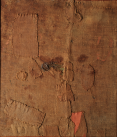Abstract
After Birger Munk Olsen's great and precious work about the manuscripts of classical auctores from the eleventh and twelfth centuries, the bulk of the glosses on the classics from the age of the so-called 'twelfth-century Renaissance' remains unpublished and lacking proper surveys, thus deserving attention. A small but intriguing piece of this enormous puzzle can be seen in the different paths followed through the centuries by the glosses on Aen. 1.94, which includes the first words of Eneas in the poem: "O terque quaterque beati." From the twelfth century onwards these words began to receive an allegorical interpretation, tied to the numbers 3 and 4, which is probably connected with the gloss of Guillaume de Conches on Macrobius' quotation of the Virgilian verse itself (Comm. 1.6.44). Only in the fourteenth and fifteenth centuries did awareness about different roots of the Virgilian numbers begin (e.g. Hom. Od. 5.306).
Except where otherwise noted, the content of this site is licensed under a Creative Commons Attribution-ShareAlike 4.0 International (CC BY-SA 4.0).
Authors retain copyright of their work. The CC BY-SA 4.0 licence allows readers to copy and redistribute the material in any medium or format, and to remix, transform, and build upon the material for any purpose, even commercially, as long as the original author is credited and as long as any works that are derived from the original are distributed under the same terms.

